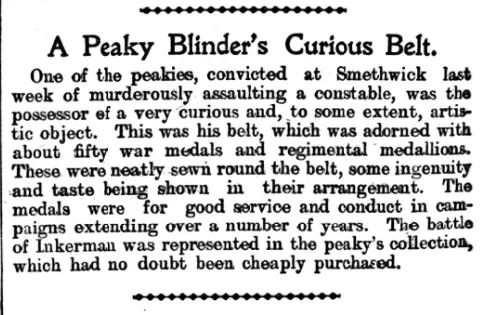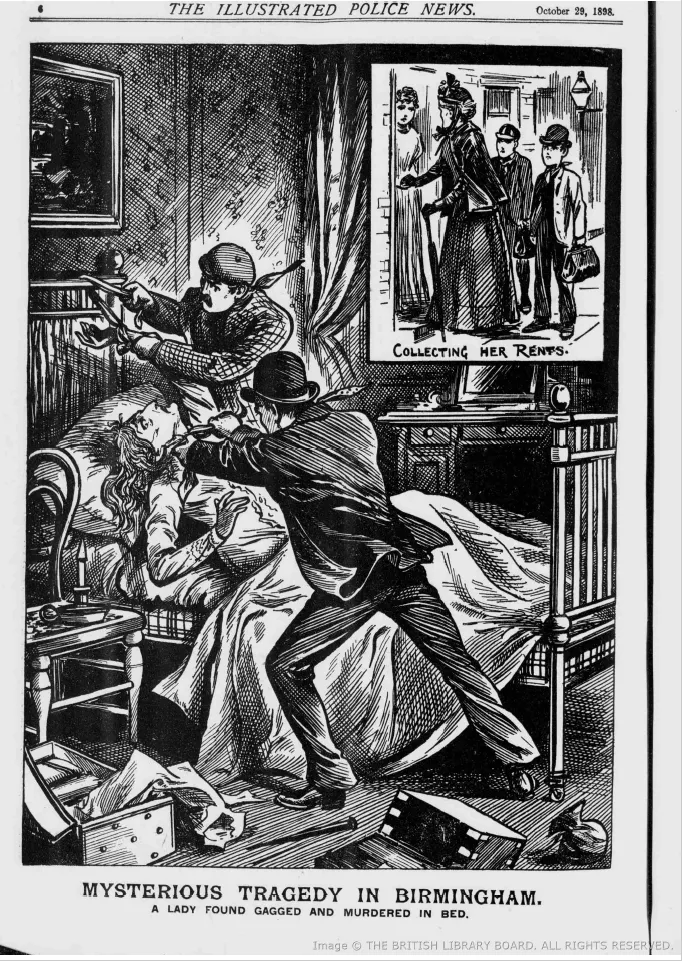It has been nine years since the BBC series Peaky Blinders hit our screens, attracting over 2 million viewers in each series. With the show's final series now airing, BBC Two are showing a new two-part documentary series, The Real Peaky Blinders, starting at 9pm on Monday 7 March. So who were the real Peaky Blinders?
Let's look at some records. Our starting point is the British Newspaper Archive (BNA) a fantastic, growing collection of newspapers covering the whole of the UK, also available to anyone with a Findmypast Pro subscription. A general search reveals over 500 references in newspapers to the Peaky Blinders as far back as 1890. Unlike in the TV series, the gang was not an organised group and the term covered a range of violent criminals in the Midlands.
Thomas Shelby, played by Cillian Murphy has his trademark haircut, but it was their clothing that made the real Peaky Blinders stand out. In 1929 The Warwick and Warwickshire Advertiser looking back at the era of the Peaky Blinders (which had passed by then) described their distinctive attire: "The 'peakies' referred to above were also known as 'peaky-blinders' - a name they acquired by reason of their peculiar headdress. They were violent characters and pulled over one eye they wore a peaked cap. The peak often contained a sharp piece of steel or metal, which could be made a very formidable weapon. Over the other eye there was a carefully trained curl of hair... their principal weapons of attack were heavy belts with enormous buckles attached to them... Enormous bell bottoms to their trousers were another peculiar feature of their dress."


Unfortunately there isn't a list of Peaky Blinders. More a type of criminal than a member of a specific gang, newspaper records would not always highlight whether someone was a Peaky Blinder and the term was rarely used in criminal records. However, using the BNA, I found a reference in the Western Mail on 22 October 1898, reporting on a murder in Birmingham: "A young peakie blinder named Frank Jones was arrested." The Warwick and Warwickshire Advertiser reported on the 29 October 1898 that Frank Jones was an alias and his real name was Claude Felix Mumby.
Claude along with an accomplice, James Twitty, had been accused of murdering Mary Ann Aliban at a house in Latimer Street, Birmingham, on 20 October 1898. The murder was sensationally depicted in the Police Illustrated News on 29 October (also available on BNA).

So who was this Claude Felix Mumby? He was born in Cardiff in 1877. By the age of four he had moved to Birmingham, living with his family at 2 Johnson Street in Nechells, Birmingham in the 1881 census. 10 years later, at the age of 14 he's living at 29 Lees Street in the All Saints district of Birmingham with his family. His father was a carpenter.
Seven years later, at the age of 21, Claude was on trial for murder. The National Archives has a criminal record for the case. Mumby was convicted on 15 December 1898. He is recorded in the Calendar of Prisoners for 1898 held by Ancestry. Ancestry has a strong collection of police and criminal records for Birmingham and the West Midlands and is an excellent resource for researching real Peaky Blinders.

Apparently Claude was not a prolific offender. He had only been convicted for two workhouse misdemeanours. By contrast, looking at the record of his co-conspirator James Twitty (alias George Webb), it shows he had a long record of offending. They were both initially sentenced to death, but the sentence was later commuted after the intervention of the then home secretary, to penal servitude for life.
In the 1901 census we find Mumby in HMP Princetown, Dartmoor and then in the 1911 census in the Portand Convict Prison in Dorset.

Claude died in 1921 in Berkshire.
James Twitty was also born in 1875. There is a picture of him on Ancestry in their West Midlands Criminal Registers, 1850-1933 (see lead photo above).
In the 1939 Register, Twitty was residing at Broadmoor Asylum. He died nine years later at the age of 73.
What of the victim?
Mary Ann Aliban was born in 1839, in Birmingham to Joseph and Eleanor Reynolds, her father was a huckster or street seller, as was she in later life, she never married.
There are so many amazing stories out there waiting to be discovered. Criminal records provide an extra dimension. As a starting point, It is always worth checking the British Newspaper Archive, all you have to do is put in a "name".
You never know, if your ancestors are from Birmingham you might be connected to one of the real Peaky Blinders!
Further Reading: Peaky Blinders - The Real Story of Birmingham's Most Notorious Gangs by Carl Chinn